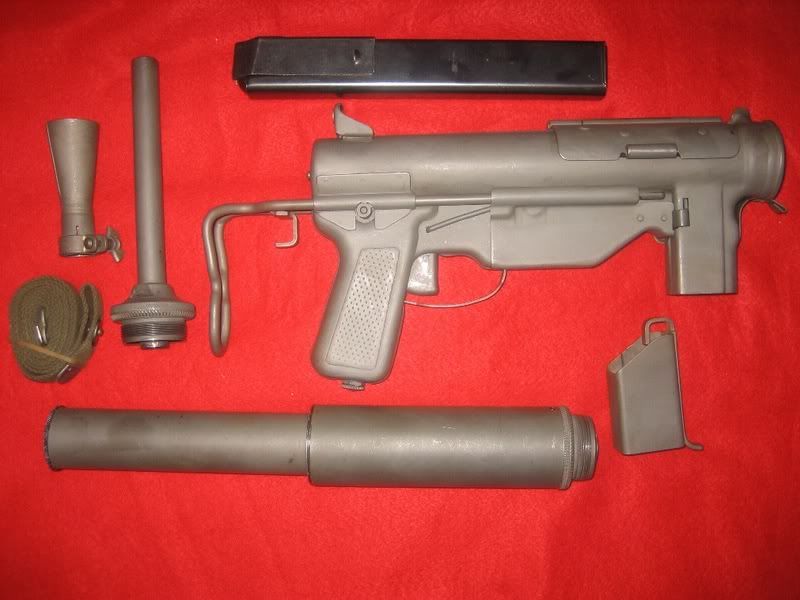Bump!
Bought one…

[QUOTE=Panzerknacker;103945]I dont know if you are refering to this splinter but the M3 is not gas operated but simple blowback
And the Thompson might be innacuratte but it carry a lot of firepower.
not true it’s very accurate.
Define “very accurate” as you understand it.
Me likely, how much was that replica (if i may not be mistaken).
That is not a replica, it is a “live” full auto M3A1 with a working OSS silencer, and it cost a little over $12,000.00.
the tompson has an effective range of about 50 meters and the bullet travels to 150 meters.
50 Meters? I can take my 1911 with a 5" barrel firing the same .45 ACP as the Thompson and shot 18" groups at 150 yards. That is with a pistol; the Thompson would at least have to be that accurate and should be more accurate given the longer barrel.
Open bolt submachine guns are actually less accurate than well-made pistols for the simple reason that when you pull the trigger, a heavy breech block flies several inches forward under the action of a powerful spring, then suddenly comes to a stop as the cartridge is fired. the shooter therefore feels a significant part of the felt recoil BEFORE the bullet has even left the barrel.
In simple terms, at the point of ignition, the sights are not anywhere near where they were at the point of trigger release, so accurate shooting is impossible.
To put this in perspective, the specification for the Sterling submachine gun, if I remember correctly, was to be capable of shooting an 18 inch group at 100 yards, and that is a peacetime, post-war weapon!
However, a submachine gun is significantly easier to use effectively than a handgun, particularly with little training.
True the breech block slamming forward would decrease accuracy but a well trained soldier should be able to compensate for that to an extent. I certainly see where it would be a factor with a soldier with less training but the training level of the soldier does not determine the effective range of a weapon. Just as a weapon like 1903 Springfield is effective over 1000 yards but only a highly trained marksman can hit anything at that distance. The Sterling was a post war design but it was also much more cheaply made than the Thompson and had a barrel that was nearly three inches shorter.
Guess to sum up my point is that I think the lack of training was a major factor in making the Thompson appear even less accurate than it was. Just as most people with little experience firing a .45 ACP pistol usually don’t shoot it very accurately but an experience shooter can usually greatly extend the range that it can accurately be fired at. It is not the firearm but the person on the trigger.
Just as most people with little experience firing a .45 ACP pistol usually don’t shoot it very accurately but an experience shooter can usually greatly extend the range that it can accurately be fired at. It is not the firearm but the person on the trigger.
Exactly, if it is so inaccurate then why has it survived nearly unchanged in 97 years? Why is the 1911 design used by a great majority of shooters in competition?
The advantages of the Grease gun were that it was cheap to produce, it was very hard to jam and it’s slow rate of fire made it both ammo conservative and easier to hold on target.
The Thompson’s springs do not make the gun jump forward as much as the springs in a Sten or Sterling do, it’s weight helps with that. The one that jumps the most is the Sten, mine really has a feeling of “lungeing” forward when fired unloaded. Much more so than the Sterling, the Grease gun, the Mp40 or the Thompson (1928 or M1)…I think it’s because of not having a pistol grip to control it.
